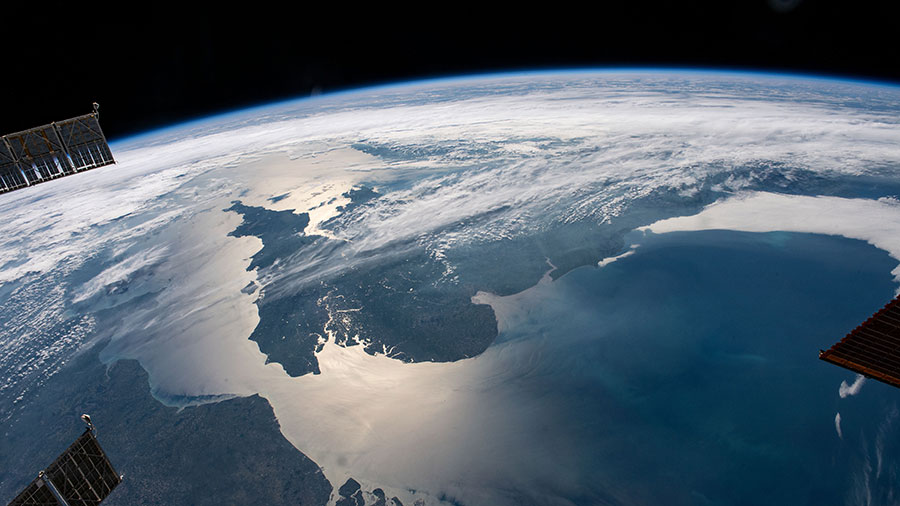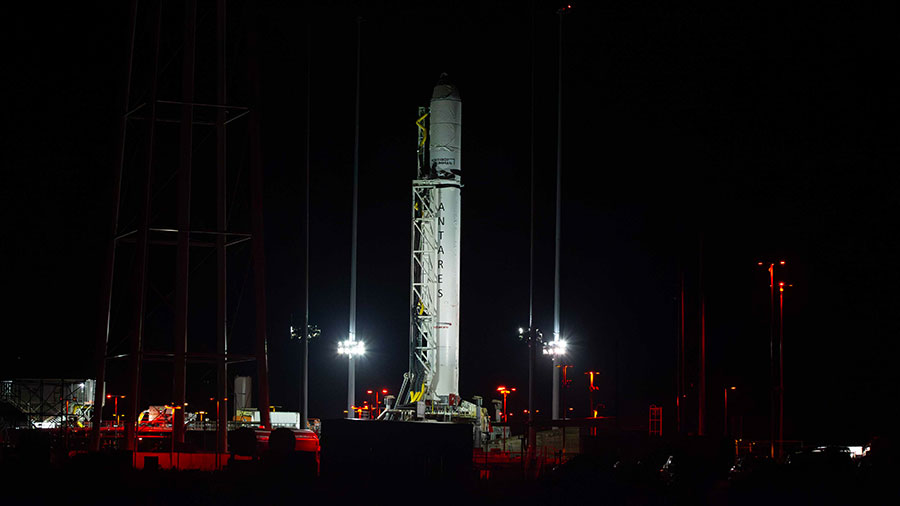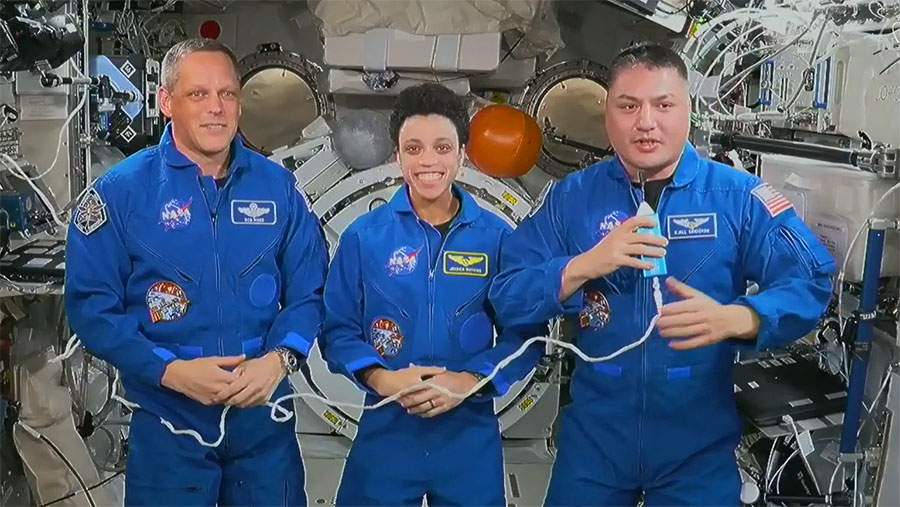
More human research, including how astronauts move around in microgravity as well as the effect of weightlessness on vision, packed the science program aboard the International Space Station on Thursday. The seven-member Expedition 67 crew also continued its ongoing focus on life support, orbital plumbing, and electronics systems maintenance.
The lack of an up and down reference while living in microgravity affects how astronauts manipulate and grip objects. Researchers want to get a closer understanding of that behavior to keep astronauts safe in the differing gravitational environments of deep space travel, planets, moons, and asteroids. NASA Flight Engineers Bob Hines and Jessica Watkins took turns seated inside the Columbus laboratory module on Thursday for the long-running GRIP experiment. The duo gripped and maneuvered a specialized device in response to pre-programmed stimuli so scientists can gain insights into a crew member’s cognition and perception during spaceflight.
Hines would go on to orbital plumbing duties filling water containers in the Unity module. Watkins wrapped up her day installing radio frequency identification (RFID) readers inside Unity. The installation work is part of the RFID Smart Sensing study that seeks to improve inventory accuracy and item location on the station.
ESA (European Space Agency) Flight Engineer Samantha Cristoforetti checked radiation detection hardware and collected microbe samples from the area around the Veggie space botany facility for analysis. NASA Flight Engineer Kjell Lindgren stowed biology research hardware and then tested the station’s new toilet system located in the Tranquility module.
Eye checks were back on the schedule on Thursday for Commander Oleg Artemyev and Flight Engineer Sergey Korsakov. The duo took turns scanning each other’s retinas using medical imaging hardware with real-time support from doctors on the ground. The eye exams help researchers understand how weightlessness affects vision and the shape of the eye. Flight Engineer Denis Matveev spent his day servicing Russian life support gear and stowing hardware for disposal inside the ISS Progress 80 resupply ship docked to the Poisk module.
Learn more about station activities by following the space station blog, @space_station and @ISS_Research on Twitter, as well as the ISS Facebook and ISS Instagram accounts.
Get weekly video highlights at: http://jscfeatures.jsc.nasa.gov/videoupdate/
Get the latest from NASA delivered every week. Subscribe here: www.nasa.gov/subscribe




